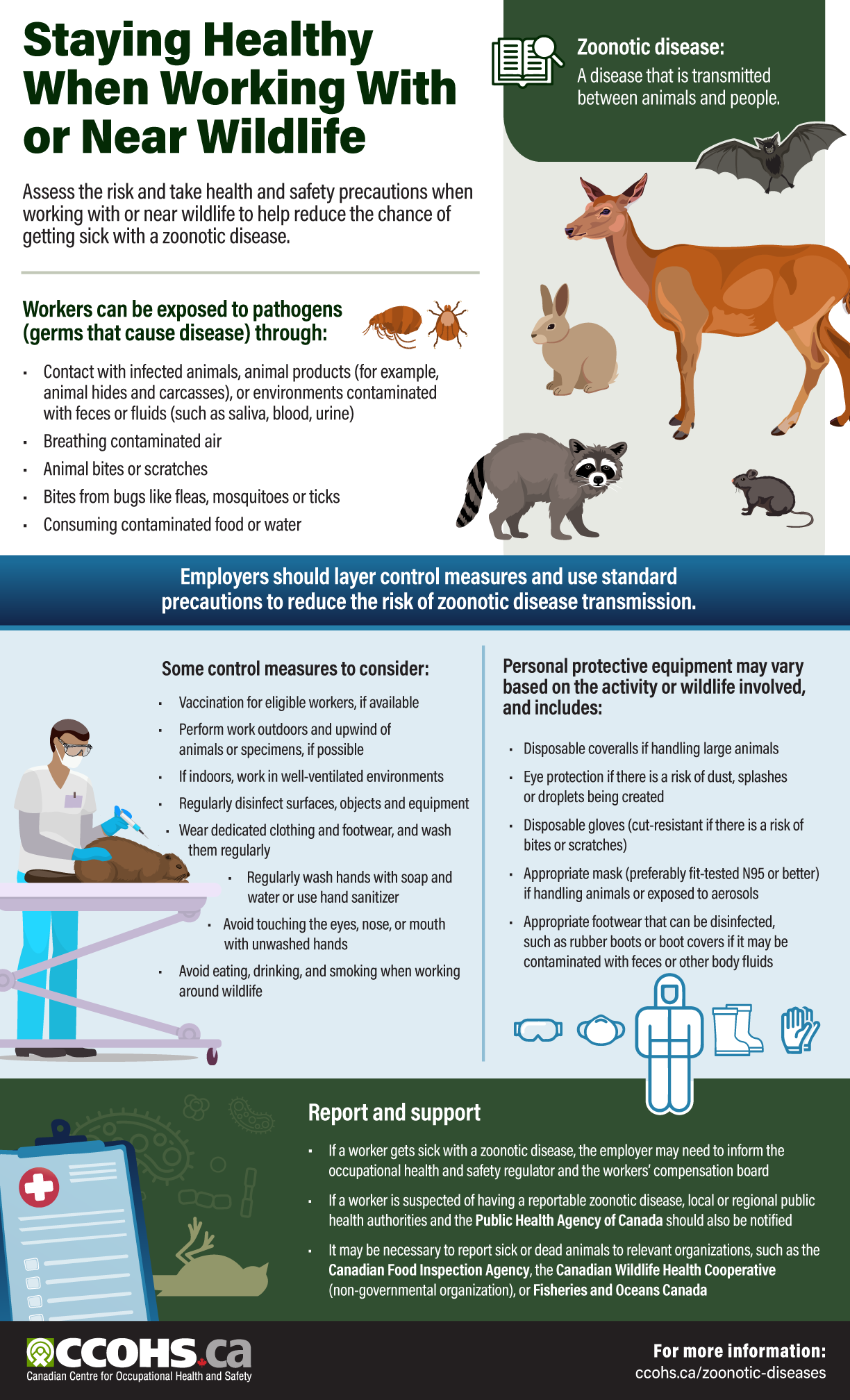Staying Healthy When Working With or Near Wildlife
[PNG, 380 KB]

Description: Staying Healthy When Working With or Near Wildlife
Assess the risk and take health and safety precautions when working with or near wildlife to help reduce the chance of getting sick with a zoonotic disease.
Zoonotic disease: A disease that is transmitted between animals and people.
Workers can be exposed to pathogens (germs that cause disease) through:
- Contact with infected animals, animal products (for example, animal hides and carcasses), or environments contaminated with feces or fluids (such as saliva, blood, urine)
- Breathing contaminated air
- Animal bites or scratches
- Bites from bugs like fleas, mosquitoes or ticks
- Consuming contaminated food or water
Employers should layer control measures and use standard precautions to reduce the risk of zoonotic disease transmission.
Some control measures to consider:
- Vaccination for eligible workers, if available
- Perform work outdoors and upwind of
- animals or specimens, if possible
- If indoors, work in well-ventilated environments
- Regularly disinfect surfaces, objects and equipment
- Wear dedicated clothing and footwear, and wash them regularly
- Regularly wash hands with soap and water or use hand sanitizer
- Avoid touching the eyes, nose, or mouth with unwashed hands
- Avoid eating, drinking, and smoking when working around wildlife
Personal protective equipment may vary based on the activity or wildlife involved, and includes:
- Disposable coveralls if handling large animals
- Eye protection if there is a risk of dust, splashes or droplets being created
- Disposable gloves (cut-resistant if there is a risk of bites or scratches)
- Appropriate mask (preferably fit-tested N95 or better) if handling animals or exposed to aerosols
- Appropriate footwear that can be disinfected, such as rubber boots or boot covers if it may be contaminated with feces or other body fluids
Report and support
- If a worker gets sick with a zoonotic disease, the employer may need to inform the occupational health and safety regulator and the workers’ compensation board
- If a worker is suspected of having a reportable zoonotic disease, local or regional public health authorities and the Public Health Agency of Canada should also be notified
- It may be necessary to report sick or dead animals to relevant organizations, such as the Canadian Food Inspection Agency, the Canadian Wildlife Health Cooperative (non-governmental organization), or Fisheries and Oceans Canada
For more information: ccohs.ca/zoonotic-diseases
Document last updated on: 2024-03-06
